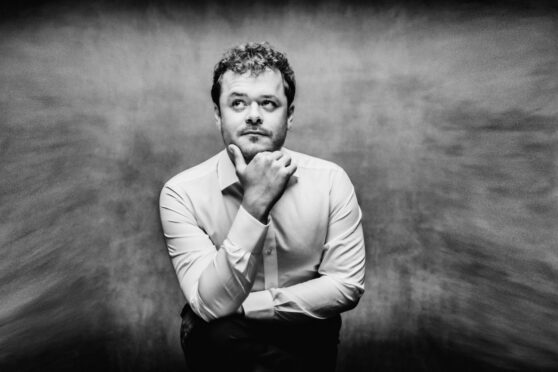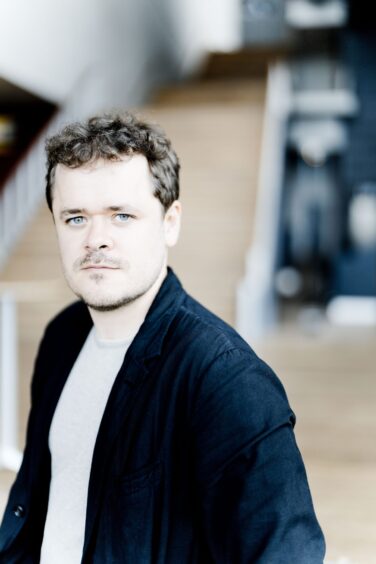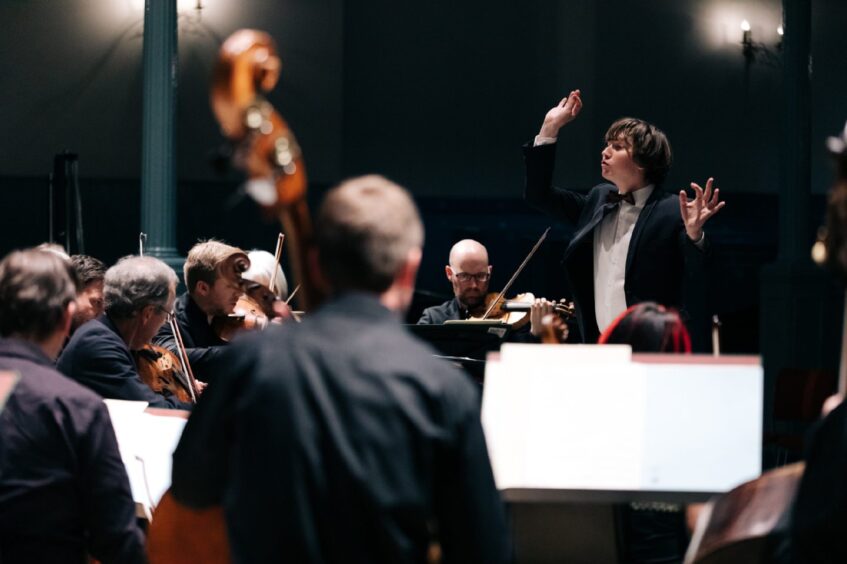Connections, that what the forthcoming concert in Aberdeen’s Music Hall by the Scottish Chamber Orchestra is all about.
The tie between composers Brahms, Schumann and Mendelssohn is one, apart from them being three of Germany’s finest 19th century composers. The other is the bond between soloist, conductor and orchestra – pianist Benjamin Grosvenor, principal conductor Maxim Emelyanychev and the SCO.
Brahms – whose Tragic Overture opens the concert on November 25 – was instrumental in publishing the original version of Schumann’s 4th Symphony, which concludes the programme.
Meanwhile, Mendelssohn’s first piano concerto was championed by Clara, Schumann’s wife. The first could be considered tenuous, but there’s no doubting the validity of the other.
Career started at local church
“Collaborating with the SCO and Maxim Emelyanychev is immensely exciting,” says Grosvenor. “Our past performances together have felt like true chamber music. As a concerto partner, Maxim radiates an energy and spontaneity so that each performance feels fresh and new.”
Mendelssohn himself gave the first performance of the G minor concerto in 1831, a work he said “was written in only a few days and almost carelessly”.
However, such indifference didn’t stop its popularity – thanks to Clara Schumann – and it’s something of a surprise it’s not in the standard repertoire of soloists nowadays. His symphonies seem to take precedence, but that is something Grosvenor is out to remedy.
“Mendelssohn can be seen as a Classical-Romantic, showcasing mastery across various musical forms while maintaining a strong connection to tradition”, he says. “His first piano concerto showcases his natural skill and boasts sumptuous chamber-style passages, notably in the second movement.”
Grosvenor’s career started 20 years ago with a concert in a local church. “My mother was a pianist and her influence and guidance were instrumental in sparking my interest in the piano early on. She definitely nurtured my early passion for music.
“I suppose I hoped back then that I would become an accomplished pianist. I was certainly set on it from a young age. I’m pleased to have been able to grow musically over so many years. It’s a testament to the power of passion, dedication and the support of those around me.
Good to have a mixture
Like many world-class musicians Grosvenor enjoys a varied career, mixing orchestral engagements with ensemble and solo work. Later this year, he will embark on a tour of Europe with Hyeyoon Park (violin) Kian Soltani (cello) and Timothy Ridout (viola).
“I enjoy both solo and ensemble work,” he continues. “Performing solo allows for a deep personal connection with the music and the audience. On the other hand, collaborating with others brings a different kind of joy, as it’s all about collective creativity and synergy. It’s good to have a mixture of both.”
The Schumann symphony, premiered 21 years after the Mendelssohn work saw the light of day, is unique in the way the four movements follow each other without a pause. It was a revised version of the original 1841 composition, so in effect it was a symphony composed twice.
Melodies will be flowing
In a concert which follows a traditional overture-concerto-symphony formula, Brahms’ Tragic Overture kicks off the evening. However, don’t be misled by the title as it’s no funeral piece. The name is merely to distinguish it from a companion piece he wrote in the same year, the more ebullient Academic Festival Overture.
However – and to finish the connection theme this concert represents – all three composers are tunesmiths in their own right. As well as beautiful harmonies, the melodies will be flowing as fast as the rivers Dee and Don when in spate.
Benjamin Grosvenor and the Scottish Chamber Orchestra, Aberdeen Music Hall, Saturday, November 25, 7.30pm. Phone 01224 641122 or go to aberdeenperformingarts.com




